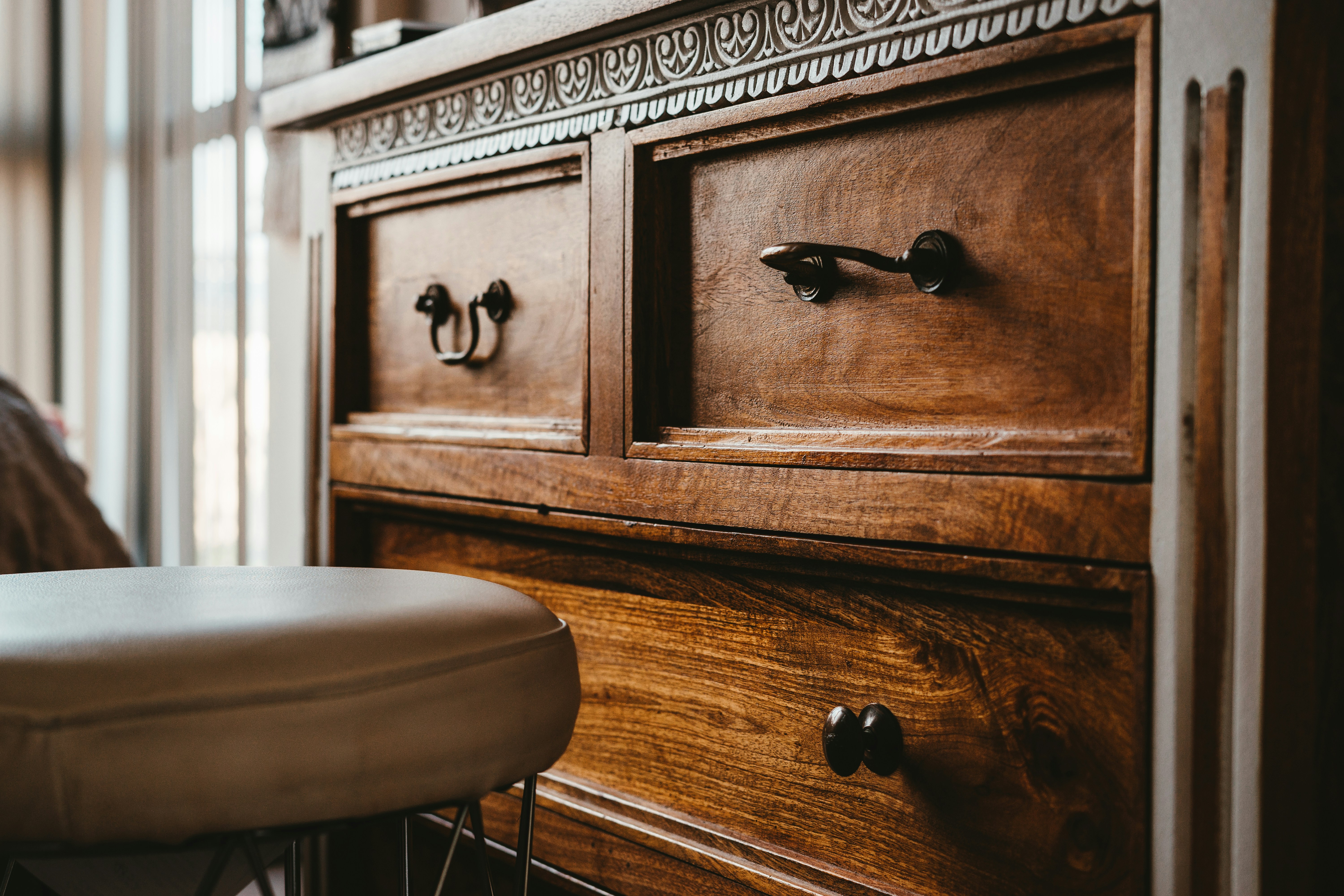
A Comprehensive Guide to the Most Sought-After Periods of Antique Furniture: Identifying Authentic Pieces

A Comprehensive Guide to the Most Sought-After Periods of Antique Furniture: Identifying Authentic Pieces
Antique wood furniture provides a glimpse into the past, reflecting its time’s aesthetic and cultural values. This guide offers an overview of antique furniture’s most valuable and collectible periods, highlighting what makes these pieces sought after.
Several styles of antique furniture stand out, including Colonial, Pennsylvania Dutch, Federal, Sheraton, and Shaker, each with its own historical significance. The Victorian era featured ornate designs, while Art Nouveau introduced organic shapes. Modern and Post-Modern styles focused on blending functionality with artistic elements. This guide explores these periods and their defining features.
If you’re looking to spruce up your space (like your dining room) with early furniture, you’ve come to the right place! We will cover the top 8 style periods of antique furniture, tips for identifying authentic pieces, learn about notable furniture makers from different periods and recognize features that increase the value of antiques. Whether you’re a seasoned collector or just starting, this guide will help you identify antique furniture periods.
1. The Colonial Period of Antique Furniture
The allure of early American furniture lies in its enduring appeal. This furniture reflects the aesthetics of the time and serves as a testament to the craftsmanship and practicality of the Colonial period. Identifying authentic pieces from this era involves understanding key characteristics, including the materials used, common designs, and the craftsmanship methods that were prevalent during the 17th and 18th centuries.
Characteristics
Colonial furniture is marked by its functional, simple, and moveable designs. These designs arose during a time when European empires were exploring and colonizing much of the New World. Unlike the ornate features found in the decorative arts of Europe, Colonial furniture showcased practicality in its construction. The designs were rooted in the necessity of daily life, focusing on utility while still incorporating an understated beauty.
Materials
The lines are often clean with subtle curves, directing attention to the intricate details often found in the legs of the pieces. Solid woods were favored for their natural beauty, with an emphasis on highlighting the wood grain. Mahogany became a popular choice, prized for its durability and rich color. Colonial furniture’s unique charm and timeless quality come from its natural materials, featuring less decoration and focusing on the beaty of wooden furniture.
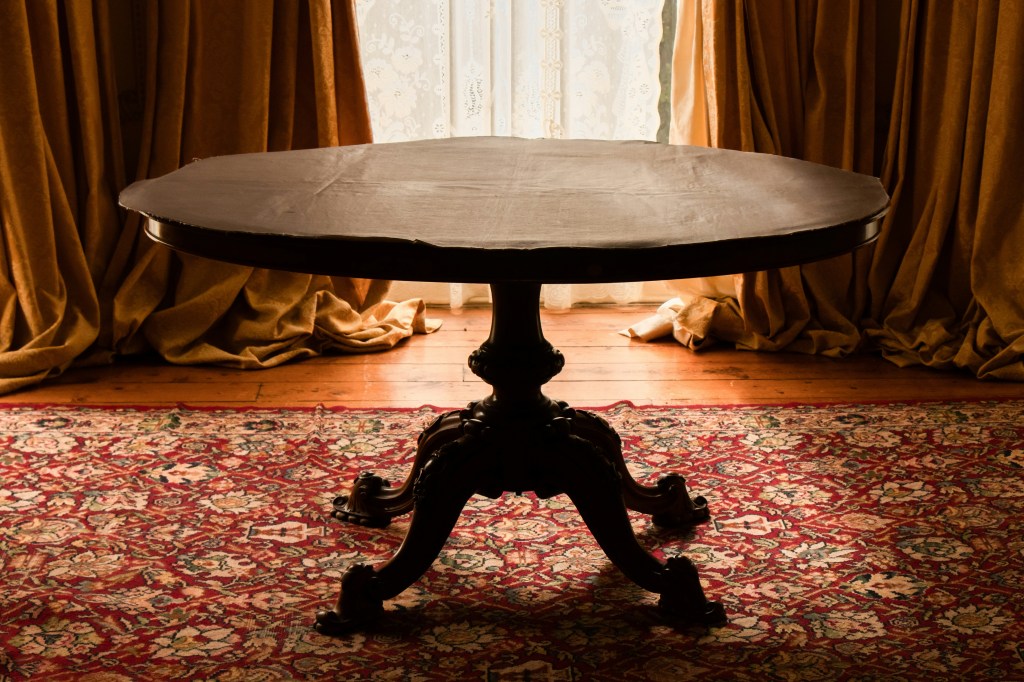
2. The Pennsylvania Dutch Period of Antique Furniture
The Pennsylvania Dutch style merges German and American influences into a unique furniture aesthetic. Rooted in the traditions of early settlers, this style emphasizes practicality and simplicity. Additionally, the style reflects rural life and embodies the cultural heritage of the communities that crafted the pieces.
Features and characteristics
Identifying authentic pieces of Pennsylvania Dutch furniture requires knowledge of specific features that define this style. Key characteristics include distinctive decorative motifs and construction techniques that set these pieces apart from other Colonial furniture. For instance, the straight lines and tapered legs typical of Pennsylvania Dutch design contribute to its uncluttered appearance, while the hand-painted motifs add a touch of decoration.
Collectors should focus on antique Pennsylvania Dutch furniture and German American influences. The cabinet design of skilled craftsmen was often designed for storage, particularly for linens and other household items. Common woods used in construction included pine, walnut, and maple, each selected for their availability and durability.
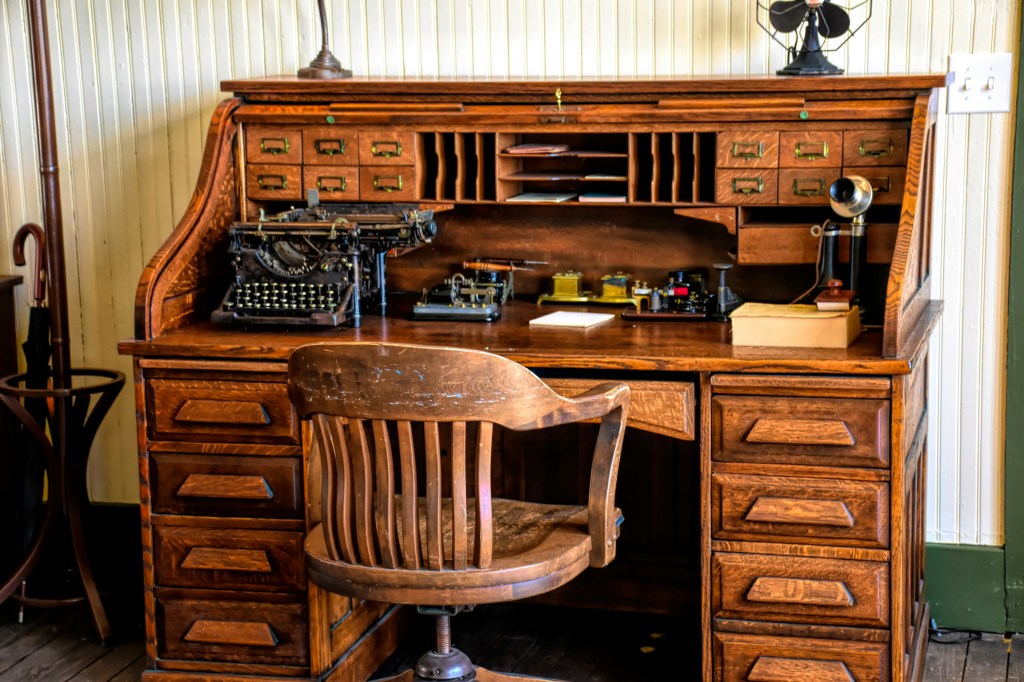
3. The Federal Style of Classic Furniture
Neoclassicism greatly impacted U.S. furniture design in the late 18th and early 19th centuries. Originating in Europe, this movement revived classical art and architecture, inspired by ancient Roman and Greek aesthetics. In America, it manifested as Federal-style furniture, defining the era’s design.
Characteristics
Federal furniture is characterized by thin lines, fine inlays, and balanced proportions. Craftsmen emphasized elegance and simplicity, showcasing their exceptional skills. Key features include symmetrical lines and delicate tapered legs, reflecting meticulous attention to detail and high-quality materials.
Federal style retained the clean lines of earlier styles while incorporating elements inspired by ancient Roman ruins. Curved lines were rare, mainly appearing in chair backs, as the style emphasized straight, orderly shapes reflecting the clarity and rationality of the neoclassical period.
In addition to its structural characteristics, Federal style furniture often featured decorative elements like urns, acanthus leaves, and eagles, which connected the pieces to classical symbolism. The use of exotic woods was also prevalent during this time, as these materials added richness and a touch of opulence to the design.
4. The Sheraton Period
The Sheraton style emerged in the late 18th century, marking a shift in furniture design that emphasized elegance and functionality. Characterized by simplicity, it features straight lines and tapered legs, contributing to a graceful appearance.
Materials
Identifying authentic Sheraton period pieces is an enlightening journey for collectors. Key features include streamlined designs and the use of woods like mahogany and satinwood, often paired with decorative elements of rosewood, birch, and ash. American versions frequently incorporated local woods such as walnut, maple, and cherry, reflecting available New World resources.
Characteristics
The Sheraton style, founded by designer Thomas Sheraton in London, England, significantly influenced American furniture design through his work “The Cabinet Maker.” Sheraton’s designs feature simpler, rectangular elements that highlight the beauty of materials, in contrast to the more ornate style of his contemporary, George Hepplewhite.
Overall, the Sheraton style embodies a blend of functionality and beauty, making it a timeless choice for furniture design. Its signature tapered legs and careful attention to wood selection which was a sharp contrast to the Queen Anne and Chippendale design.

5. The Shaker Period
The Shaker community significantly shaped minimalist furniture design, prioritizing simplicity and practicality. Characterized by clean lines and utility over ornamentation, their creations contrast with the ornate styles of their time. This purpose-driven design mirrors Shaker’s values and laid the foundation for modern minimalist aesthetics.
Characteristics
The Shaker furniture style originated from the Shaking Quakers in the colonial Northeast. Departing from excessive decorations of the same period, their emphasis on simplicity and integrity reflected their religious beliefs and lifestyle.
Materials
Authenticating Shaker period pieces involves recognizing features like natural wood finishes and understated elegance. Shaker furniture emphasizes utility, combining visual appeal with high functionality, often showcasing the beauty and distinctive grains of the wood used.
Shaker furniture commonly uses woods native to the Northeastern United States, such as maple, birch, walnut, and oak. These materials offer durability and highlight the natural beauty of American furniture design.
6. The Victorian Period
Victorian furniture stands as a representation of opulence and detailed craftsmanship, embodying the spirit of a remarkable era in design. Characterized by features such as dark woods, intricate carvings, and rich upholstery, authentic pieces from the Victorian period reflect a commitment to artistry and quality.
Overview of the Victorian period
The Victorian period, which spanned from 1837 to 1901, encompassed numerous subcategories, each contributing to the diverse landscape of Victorian design and art history. This era often drew inspiration from several previous styles, yet its hallmark was always opulence and elegance.
Gothic revival
Among the many subcategories, the Gothic Revival stands out. It was influenced by the French Gothic architecture of the 12th century and featured elaborate decoration, like carvings and geometric shapes. This style utilized materials like oak, walnut, and rosewood and was often adorned with heavy fabrics.
Rococo style
Another notable style emerging during this time was Rococo, which brought a flair for ornate designs and playful motifs to furniture. Wood covered in gold finish was also a key feature in this style.
Arts and Crafts movement
In contrast, the Arts and Crafts movement arose in the 19th century as a reaction against the growing industrialization of furniture production. Many craftsmen viewed the heavy ornamentation of Victorian furniture as excessive and unnecessary. This new style aimed to revive simpler designs and straight lines, promoting a return to craftsmanship and emphasizing quality over excessive embellishment.
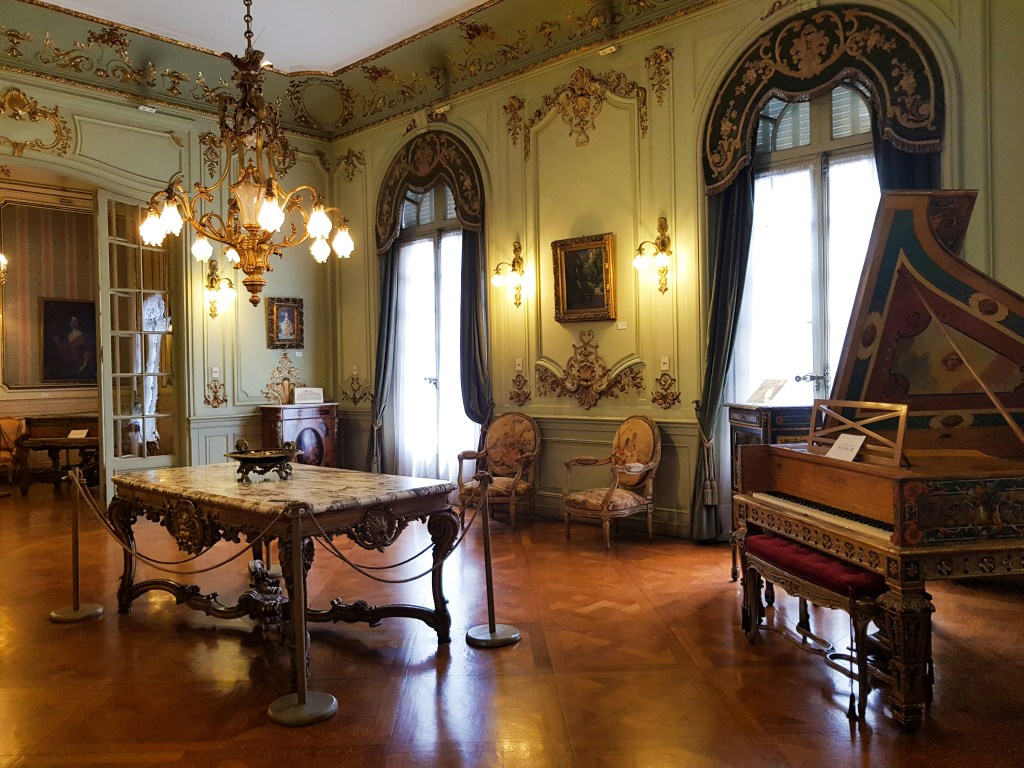
7. The Art Nouveau Period
The late 19th and early 20th centuries marked a significant fusion of art and furniture design, giving rise to a unique aesthetic known as Art Nouveau. This period is characterized by its emphasis on curved lines, floral and organic patterns, and the innovative use of materials such as glass and metal. French Art Nouveau furniture combines beauty, nature, and functionality, making it popular among collectors.
Characteristics
Identifying authentic pieces from the Art Nouveau period involves recognizing key design elements. Common characteristics include flowing, asymmetrical lines and natural themes, often inspired by flora and fauna. The furniture is typically adorned with motifs of leaves, flowers, and trees, bringing the beauty of the natural world into interior spaces. The woods commonly used during this period, such as walnut, mahogany, and maple.
Emerging in Paris, France, French Art Nouveau is a celebration of artistic expression that seeks to break away from traditional forms. Renowned designers of this era, such as Louis Majorelle and Émile Gallé, played a pivotal role in shaping the style. Their work highlights the intricate details and organic forms of Art Nouveau furniture, marking it as a significant design movement and a testament to the fine arts.
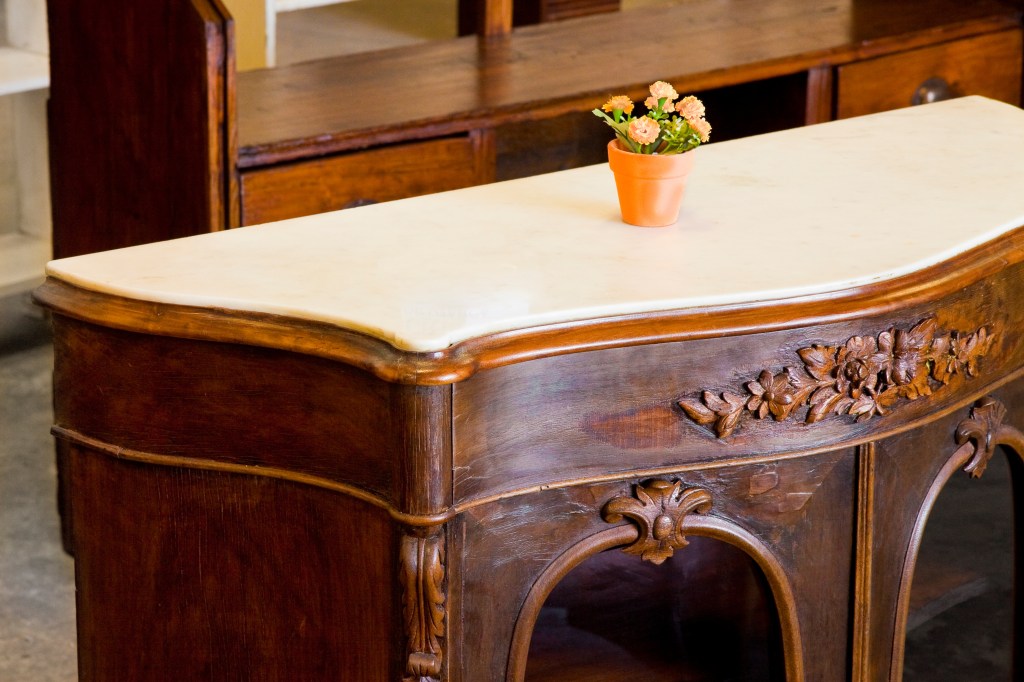
8. The Modern/Post-Modern Periods
The departure from traditional styles towards clean, functional, and innovative designs marks a significant evolution in furniture aesthetics. Modern and post-modern furniture marks a shift from ornate designs to simplicity and functionality. This transformation started in the late 19th and early 20th centuries, paving the way for iconic mid-century modern and post-modern styles.
Overview of the Modern/Post-modern period
Identifying authentic pieces from the modern and post-modern periods involves recognizing key characteristics of various furniture styles. Modern antiques, post-modern furniture, and the distinct forms of furniture from the modern period all share a commitment to innovative design and practical use. The influence of movements like the Arts and Crafts movement is evident, as furniture makers sought to celebrate the artistry of handmade pieces, elevating craftsmanship and individual expression in their designs.
Bauhaus design
A notable style that emerged during this time was Bauhaus design, which seamlessly blended art, industry, and craftsmanship while prioritizing functionality. This approach harnessed new materials such as plywood and tubular steel, allowing designers to experiment with clean lines and geometric forms that defined the era. The freedom to innovate led to the creation of furniture that was not only visually appealing but also practical and adaptable to various living spaces.
Post-modern design
While post-modern furniture is distinct from traditional antique furniture, it holds a special place among vintage furniture collectors today. Characterized by eclectic approaches and playful aesthetics, post-modern designs challenge conventional notions of style, embracing a mix of influences and unexpected combinations.
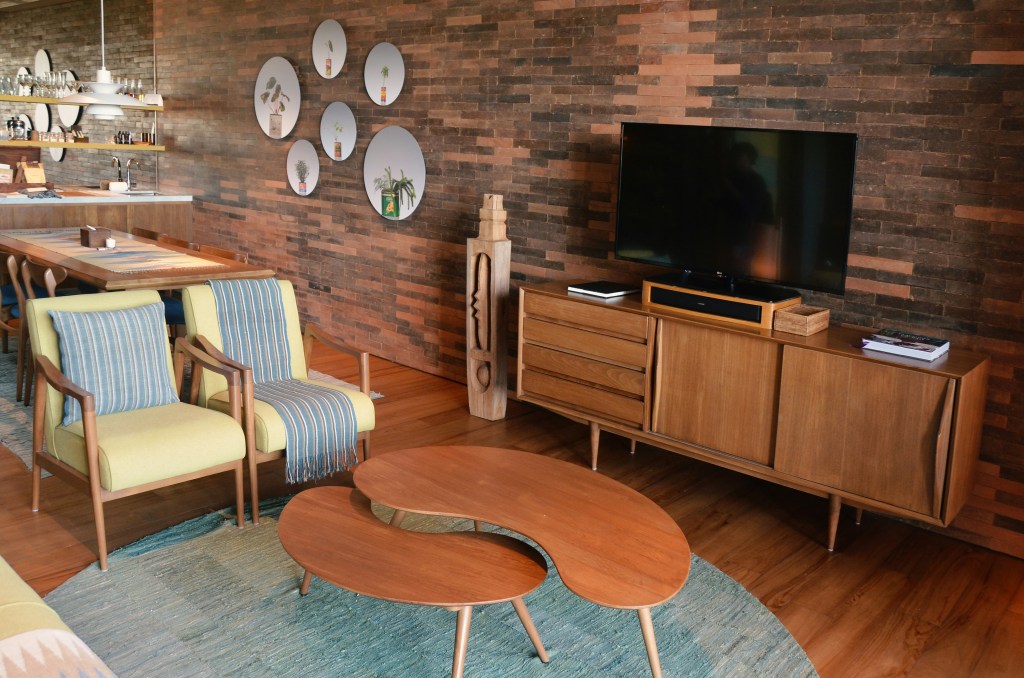
How to Identify Authentic Antiques and Faithful Reproductions
Several key factors should be considered when distinguishing between genuine antiques and modern reproductions.
Wood
One of the most important aspects is the type of wood used in the piece. Authentic antiques often showcase multiple types of wood, as different varieties were commonly sourced during specific time periods. Popular woods include mahogany, pine, and oak. In contrast, reproduction pieces tend to be constructed from a single type of wood.
Asymmetry
Additionally, it’s essential to look for asymmetry in the construction. Many antique furniture styles aimed for symmetry, but because they were handmade, achieving perfect balance was challenging, especially in intricate carvings. Therefore, if a furniture piece is extremely symmetrical, it is likely a reproduction.
Condition
Another significant factor to consider is the condition of the item. Genuine antiques often display wear and tear, particularly in high-contact areas. A close examination of drawer runners can provide insights, especially if they show signs of frequent use. Likewise, analyzing the hardware can yield valuable clues; the patina often reveals the age of the piece. Don’t forget to use your sense of smell, as antiques may carry a musty odor that can further indicate their authenticity.
Materials and craftsmanship
Finally, the craftsmanship and materials used in the construction of the piece can also hint at its age. Modern reproductions frequently incorporate materials like staples, glue, fiberboard, and Phillips-head screws, which were not commonly used in antique furniture.
Sources
https://englishgeorgianamerica.com/blogs/articles/top-8-style-periods-of-antique-reproduction-furniture#:~:text=The%20Victorian%20Period,especially%20of%20the%20floral%20variety.
https://akdfurniture.co.uk/blog/what-is-colonial-furniture/#:~:text=Colonial%20furniture%20was%20first%20introduced,graceful%20curves%2C%20and%20timeless%20appeal.
https://pearlcityantiques.com/a/blog/post/pennsylvania-dutch-period-1720-to-1830
https://home.howstuffworks.com/home-improvement/home-diy/projects/how-to-identify-antique-wooden-furniture-for-refinishing.htm
https://buffaloah.com/f/fstyles/fed/index.html#:~:text=Proportions%20Slender%20and%20delicate.,%2C%20or%20saber%3B%20sometimes%20reeded.
https://rauantiques.com/blogs/canvases-carats-and-curiosities/federal-style-furniture-and-how-to-identify-it
https://www.thesprucecrafts.com/identifying-sheraton-style-furniture-148789
https://vermontwoodsstudios.com/pages/shaker-furniture-101?srsltid=AfmBOorePrsW9ZfD85kgtVv6AnsmMExm-Ky1oJIvc_PURzmVWzNmPEEg
https://www.westlandlondon.com/articles/view,how-to-identify-victorian-furniture-a-guide_55.asp
https://styylish.com/art-nouveau-style/?srsltid=AfmBOooRPBChfBcgXOb00K7X6HxVFIQrCpW0gS2YGgdz3hJigTretx98
https://www.huihefurniture.com/blog/the-evolution-of-modern-furniture-a-brief-history
https://www.laurelcrown.com/how-to-tell-an-antique-from-a-reproduction#:~:text=The%20most%20important%20advice%20we,other%20flaws%20along%20the%20way.
About Collectibles Insurance Services
Collectibles Insurance Services has been protecting collections since 1966 and all coverage is provided by a carrier with a group rating of “A” (Excellent) by AM Best, the leading rating agency for the insurance industry.
Comprehensive coverage includes, but is not limited to: accidental breakage, burglary, fire, flood, loss in the mail, theft, natural disasters, and other causes of loss unless specifically excluded from the policy. Deductibles start at $0 for collector policies and we provide coverage for the market value of your collection for losses in excess of $50.
Additionally the protection extends At home and away, and we don't require collection itemization and serial number nor extensive paperwork and red tape.
